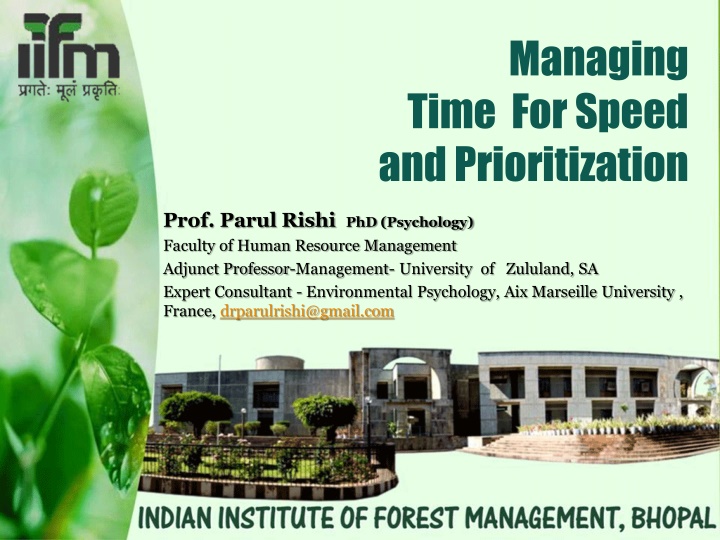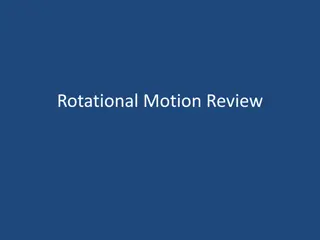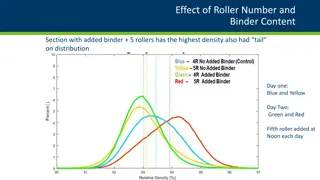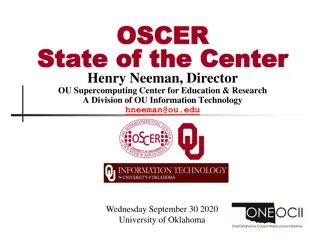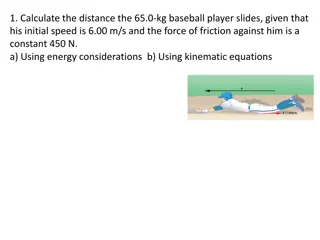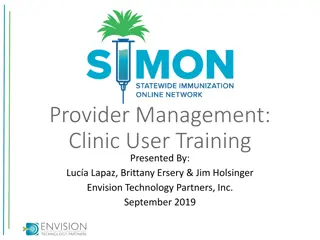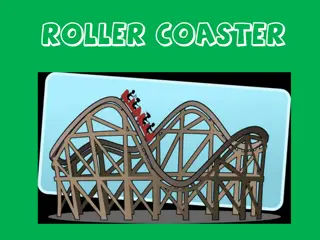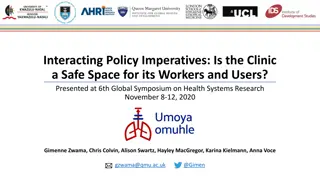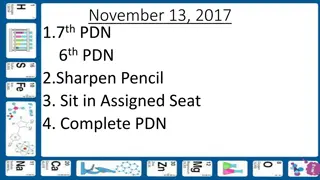Translational Medicine Symposium 2014: Roller Coaster Ride Clinic
Translational Medicine Symposium 2014 featured discussions on preclinical development, drug discovery, hurdles in clinic clearance, and reasons for compound failures in drug development. Experts shared insights on diseases, mechanisms, and signaling pathways towards achieving successful IND filing and clinical progression. The journey from drug discovery to IND submission was explored along with the challenges faced at each stage, emphasizing the slow and costly process involved.
Download Presentation

Please find below an Image/Link to download the presentation.
The content on the website is provided AS IS for your information and personal use only. It may not be sold, licensed, or shared on other websites without obtaining consent from the author.If you encounter any issues during the download, it is possible that the publisher has removed the file from their server.
You are allowed to download the files provided on this website for personal or commercial use, subject to the condition that they are used lawfully. All files are the property of their respective owners.
The content on the website is provided AS IS for your information and personal use only. It may not be sold, licensed, or shared on other websites without obtaining consent from the author.
E N D
Presentation Transcript
Managing Time For Speed and Prioritization Prof. Parul Rishi PhD (Psychology) Faculty of Human Resource Management Adjunct Professor-Management- University of Zululand, SA Expert Consultant - Environmental Psychology, Aix Marseille University , France, drparulrishi@gmail.com
Time vs. Success Being successful doesn t make you manage your time well. Managing your time well makes you successful. 2
The Problem of Managing Time By some estimates, people waste about 2 hours per day due to following: Messy desk and cluttered files Can t find things Un prepared, Try to do things which other people should do Tired/unable to concentrate 3
The 80/20 Rule Good administration in judiciary system comes from time and experience And having the Art of identifying trivial vs critical issues and accordingly allocating time. Critical witness/case details/administrative tasks are few (20%) and the trivial distracting unnecessary details/activities are many(80%). So time spent should be reverse ,i.e, 80% on 20% critical details and 20% on 80% trivial details . However, in practice, it is reverse. 4
Get it All Done Peter Drucker says: Work where you are the strongest 80% time Work where you are learning 15 % time Work where you are the weakest 5% time
From Reasonable Time to Optimal Time Frame Without any Undue Delay Time line of Judicial Administration CASES ARE MANAGED AND DISPOSED IN DUE TIME Without Compromising the Quality and Fairness of Judgment
Tools to Measure Time Management How Much Delay? Quantification What caused delay? Whether causes unavoidable/ Avoidable? Causal Analysis Who is accountable for delay? Accountability for delay
How to Manage Time??? Timely Judicial Administration Time Time Planning Planning through Time Frames
What is Time Frame??? Tool to achieve the timeliness of different activities under Judicial administration Timeframes have to fit in the contingencies of the local administrative culture Having timeframes is a prerequisite for evaluating the results of the efforts made by administration to reduce the lengths of judicial proceedings.
Timeliness of Judicial Administration (J Adm) Setting realistic and measurable time frame for each JAdmn activity Enforcing Time Frame Monitoring Time Frame
How Time Framing Helps??? Time Framing goals- shared and pursued by all through stakeholders participation To Help Build Environment for Development of Innovative/time effective Practices Help Build the culture of Shared responsibilities rather than blame game To Help Build Common Commitment among Key Players CONSIDERING THE LOCAL LEGAL CULTURE
Examples of Time Framing Across the world Finland- Optimum timeframes for each type of cases are agreed and Targets for case processing are set for which J Adm plays a crucial role. Slovenia court sets a timeframe of 18 months after the case has been presented before the court. If a decision is not taken within 18 months, the case is considered delayed. The head of court may ask the judge in charge of the circumstances why a decision has not been reached and that explanation has to be build up by J Admn after analyzing the complete scenario. case to report the Sweden targets for civil and criminal cases are set up by the Government. All units within the court define their targets and J Admn plays a crucial role to ensure meeting of targets.
Setting of timeframes for kind of procedure Denmark 58% of the civil cases should be disposed within 1 year, 63% of the criminal cases should be disposed within 2 months and 95% within 6 months. Norway Timeframes are proposed by the Ministry of Justice with consent from the Norwegian Parliament. As of today, 100% of civil cases should be disposed in six months, 100% of criminal cases in three months. J Admn remains at their toes to make it happen.
Setting timeframes in collaboration with justice stakeholders The building and maintenance process of setting realistic timeframes must involve the stakeholders at the different levels (state, court, J Admn). Setting timeframes is not a once for all event, but it has to be a continuous process built through consensus and shared objectives between the stakeholders.
Enforcing the timeframes Timeframes are not designed and implemented in a vacuum. They are organisational tools that, in order to give the expected results need to be shared and supported by the stakeholders and, in particular, by the people who work in the organisation. Therefore it is necessary to create an organisational environment to support and enforce timeframes, which will be affected by the institutional setting of the justice system (e.g. structure of the judiciary, role of the chief justice, sensitiveness about judges internal independence etc.). Also, other agencies and the bar associations should support the enforcement, which should also be mentioned in the ethical rules for lawyers.
Major functions of Judicial Administration Judicial/Case Record Management Reports Preparation Lok Adalat RTI Issuance of Cause List/grouping of cases/Listing of Cases Indexing of Judgment File Tracking /Management/Delivery of Judicial Files Preparation of Certified copies of Documents Preparation of Judicial Calendar Roaster of Judges
Contd. Coordination among different courts Submission of statements regarding case disposal Ensure Compliance Supervisory Function Infrastructure allotment and management Complaint redressal Budgetary functions Analysis of statistical data and quarterly report preparation. Parliamentary/Assembly questions
Live Above the LINE- Covey s Time Management Matrix Important Not important MANAGE AVOID Diverging papers/reports/witness Interruptions, Phone calls Media Interventions DELEGATE 1 2 Urgent Critical Pressing Cases Deadline driven activities Meetings Assembly questions DO IT NOW FOCUS Judicial procedural issues Record Management Cause list preparation DECIDE WHEN TO DO 3 4 Not Urgent LIMIT Time Wasters Disturbances Unwanted people Unrelated details to confuse DUMP
Exercise 1- How do you spend your Time? Go back to your last working week. Record the major activities that you did in the first two days of that week. Note down in the format provided. Also note the approximate time spent on each activity. Note down the total time wasted during those two days in mins/hours. Who was accountable for that- self,others, situation. How satisfied you were in the way your time was spent in those two days? Give rating from 1 as least satisfied to 7 as most satisfied.
Group Exercise Get into the group of 5. Discuss your activities in a group. Place them in either of the four cells of Covey s TM Matrix. Analyse the wasted time and discuss if it could have been avoided.
Everyone has Good and Bad Times Find your important time. Defend it ruthlessly, spend it alone, focusing on important and not urgent woks which require your thinking and full commitment. Find your dead time. Schedule meetings, phone calls, and mundane stuff during it. 21
Cutting Things Short I m in the middle of something now Start with I only have 5 minutes you can always extend this Stand up, stroll to the door, complement, thank, shake hands Clock-watching; on wall behind them 22
Using Time Journal Data What am I doing that doesn t really need to be done? What am I doing that could be done by someone else? What am I doing that could be done more efficiently? What do I do that wastes others time? 23
Procrastination Procrastination Procrastination is the thief of time Edward Young Night Thoughts, 1742 24
Balancing Act Balancing Act Work expands so as to fill the time available for its completion Parkinson s Law Cyril Parkinson, 1957 25
Comfort Zones Identify why you aren t enthusiastic? Fear of embarrassment Fear of failure? 26
Delegation Delegation No one is an island You can accomplish a lot more with help Most delegation in your life is from faculty to graduate student 27
Is The Jar Full? Stephen Covey in his book, First Things First, shares the following story "How many of these rocks do you think we can get in the jar?" he asked.
After many guesses, he said, "Okay, Let's find out." He set one rock in the jar . . . then another . . . then another. I don't remember how many he got in, but he got the jar full. Then he asked, "Is this jar full?" Everyone looked at the rocks and said, "Yes."
Then he said, "Ahhh" He reached under the table and pulled out a bucket of gravel. Then he dumped some gravel in and shook the jar and the gravel went in all the little spaces left by the big rocks. Then he grinned and said once more, "Is the jar full?"
"Probably not, He reached under the table and brought out a bucket of sand. He started dumping the sand in and it went into all of the little spaces left by the rocks and the gravel. Once more he looked and said, "Is this jar full?" "No!" we roared.
He said, "Good!" and he grabbed a pitcher of water and began to pour it in. " Well, what's the point?" Somebody said, "Well, there are gaps, and if you work really hard you can always fit some more things into your life."
"No," he said, "that's not really the point. The point is this: Put the Big Rocks in First
Priority Listing A B C of Time Management
How to Get IT Done 20 minutes at beginning of week Review your Roles o Sharpen the Saw Read and analyse before hand to save time Prioritize by Choosing Big Rocks first o Which is the most important case requiring maximum time and effort? In short, your ABC of Time Management. Schedule the Week keeping in mind the reversal of 80/20 Rule
Thank you Have a Time Managed Time For Ever! Dr.Parul Rishi/NJA-TM/IIFM 36
